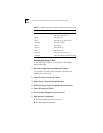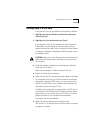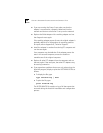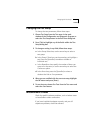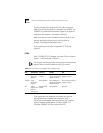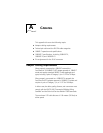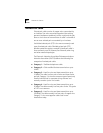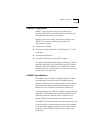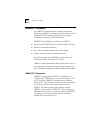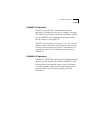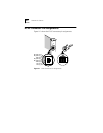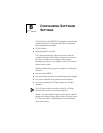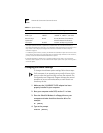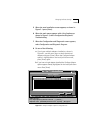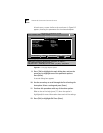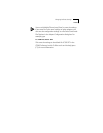
A-4 APPENDIX A: CABLING
100BASE-T Standard
The 100BASE-T standard defines a network architecture
based on the 10BASE-T standard that retains almost all of the
original IEEE 802.3 Ethernet specification, while greatly
increasing the network’s overall throughput.
100BASE-T has the following similarities to 10BASE-T:
■ Uses the same CSMA/CD access method and MAC functions
■ Retains a hub-based architecture
■ Runs over unshielded twisted-pair or fiber cabling
■ Employs the same network management tools
The maximum span of a 100BASE-T network using only
twisted-pair cable is 205 meters (672.4 feet).
100BASE-T media specifications allow Fast Ethernet to run on
the most common Ethernet wiring, including Categories 3, 4,
and 5 unshielded twisted-pair, shielded twisted-pair, and fiber.
100BASE-TX Operation
100BASE-TX designates the IEEE 802.3 specification for
100 Mbps with CSMA/CD over two pairs of Category 5 UTP
or STP wire. Most 100BASE-TX equipment only supports
100 ohm UTP cable. The pairs of wires used for transmitting
and receiving signals are the same as those used for
10BASE-T. This means that the same cabling used for
10BASE-T can be used for 100BASE-TX with no change to
cable termination. Also, the connectors used for 100BASE-TX
at the hub or end station are the common Category 5
certified RJ-45 connector for UTP.



